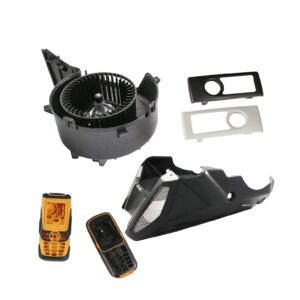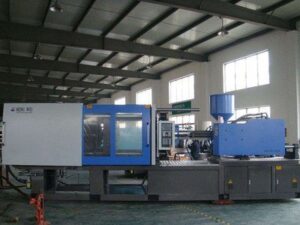The realm of industrial quality is a vast, complicated place. There are numerous factors to take into account, including industry certifications, dimensional verification, and process validation. Before moving on to make components in bigger volumes, these quality standards are typically essential to ensuring stability in each manufacturing process. In essence, it means to measure twice, or 30 times in the case of a CpK, in order to reduce the number of times you need to cut. However, as we all know, a typical component might have a wide range of characteristics, measurements, and tolerances that could make or break a part’s performance. We will discuss Geometric Dimensioning and Tolerancing (GD&T), a recent enhancement to our Critical-to-Quality (CTQ) process, in this blog post. We will also go over the various feature and dimensional measurement possibilities.
What is GD&T?
To communicate allowed geometric representations of the development of the CTQ quality inspection process, industry-standard symbols known as GD&T are employed. When you send us a 3D CAD model, it offers us a clear idea of the part’s specifications. Even further, GD&T goes above and beyond by asking for specific attributes, like position or flatness, that you want us to measure. You can give us the GD&T features detailed below, for example.
Position 
Position determines how far a feature can deviate from its actual true placement on an axis, point, or plane. A feature must lie inside the tolerance, which is a 2- or 3-dimensional tolerance zone surrounding the true position. As a result, you will know exactly where the location should be, and your tolerance limits how much the feature can vary from that point. This is frequently mentioned as a diameter to denote a spherical or cylindric tolerance zone.
Flatness 
This property, which gauges how flat a surface is, is simple. It’s crucial to remember that this symbol refers to a surface’s flatness, regardless of any other features or datums that may be present on the component. This feature, which is defined by two parallel planes, is helpful for highlighting features that should be uniformly flat without changing other dimensions on the drawing.
Straightness 
Surface straightness and derived median line (DML) straightness are two different ways to describe straightness. The most common type, surface straightness, is used to confirm consistent straightness over a feature or surface. Although it can be applied to cylinder-shaped features as well, this is frequently used with flat features. The variance of a surface within a particular line serves as the definition of this feature in both situations.Of contrast to surface straightness, DML straightness takes into account the bend in a part’s center axis, which is typically a cylinder. In this situation, DML turns into a 3-dimensional tolerance that specifies how much a part’s central axis may bend or twist.
Circularity 
The difference that can exist between a circular feature and a true circle is known as circularity, sometimes known as roundness. This two-dimensional tolerance establishes the shape of a circle with the goal of ensuring that it is not oblong, square, or in any other way unround. Circularity is measured independently of other characteristics or datums, just like flatness.
Concentricity
The center derived median points of a referred feature to a datum axis are known as concentration or coaxiality. This characteristic is complicated because it uses mathematically computed median points rather than a surface’s or feature’s actual axis.
Cylindricity
The term “cylindricity” describes how closely an object resembles a real cylinder. This three-dimensional tolerance establishes the overall roundness and straightness of a cylindrical feature. The 3-dimensional feature must be contained within this cylindrical border, which is once more measured independently of any other datum.
Parallelism
One referenced feature’s orientation in relation to a datum surface or line is referred to as parallelism. This frequently refers to how a surface plane in a 3-dimensional tolerance zone is oriented in relation to another datum plane. This ultimately indicates that the tolerance limits the possible locations for the surface, which in turn limits the angle between 2 features.
Perpendicularity
Surface and axis perpendicularity are the two types. It is determined by how closely a surface or line approaches a 90-degree angle with a datum surface or line. Surface perpendicularity is typically used to confirm that a single surface plane is perpendicular to the datum plane. For a circular feature, axis perpendicularity can be used to determine the cylindrical boundary at which the axis of the referenced feature must be.
Surface’s Profile
A surface’s profile defines a 3-dimensional tolerance zone, which is typically represented by a complex curve or shape. As a result, the full radius of the curved surface must fall within the tolerance zone when a profile measurement is called out on it, such as on a fillet. In this instance, any variation must fall within the surface profile tolerance, whether it is inside or outside the tolerance.
The inclusion of these GD&T characteristics to our automated inspection capabilities adds an additional layer of transparency to the quality control process, as we said at the beginning of this blog. Simply consult our inspection overview, get in touch with our applications developers, or have a conversation with your account manager if you want us to examine any of the aspects we’ve already discussed on your upcoming project.






